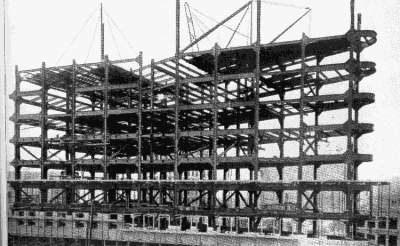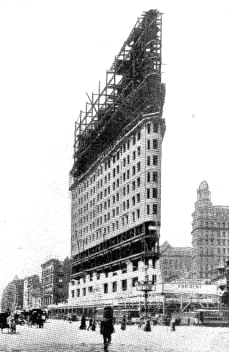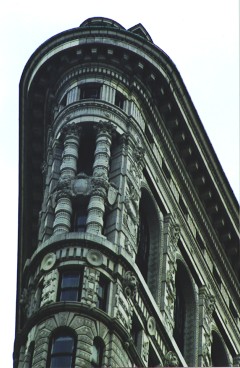Today let's talk about skyscrapers. The University of Houston's College of Engineering presents this series about the machines that make our civilization run, and the people whose ingenuity created them.
Skyscraper is a nice word. When I was a child, the 41-story 1st National Bank building loomed larger than anything else in St. Paul, Minnesota, and it did indeed seem to scrape the very sky.
The modern skyscraper came into its own in the early 1890's. But so much new technology had to be combined before it made sense to raise buildings beyond about five stories. Before architects could take that bold step into the sky, someone had to develop a workable elevator. Someone else had to see that the shell of the building should be hung on a steel skeleton -- it wasn't enough to hang iron facades on wood or brick frames. A whole new technology of building foundations had to be invented. People had to learn to design against wind loads that were becoming enormous.
Architect Tom Peters thinks that the great Chicago fire of 1871 did a lot to give these lovely monsters their present shape and form. Before the fire, Chicago's architecture was uninhibited and undisciplined. The 18,000 buildings that perished were made of wood and brick, with some iron facing. The commerce that'd built Chicago was hardly touched by the fire, and those interests exerted great pressure to rebuild a fireproof city -- an iron city -- and to make the best use of crowded downtown real estate.
So two factions converged on the rubble -- the freewheeling builders of old Chicago, and a new breed of formal designers trained in analytical mechanics. They didn't agree, but out of their conflict emerged bold new concepts for making tall steel-framed buildings -- concepts that had to be grounded on complex engineering analysis.
These new buildings couldn't rise any higher than an elevator could carry their occupants. Hydraulic lifts had been around since the 1830's, but they couldn't go to great heights. And Elisha Otis invented a safe steam-powered elevator in 1857. Of course, it had to have someone stoking a fire under the boiler. But electric motors finally got around these problems. The first electric elevators were tried out in Germany in 1880, and practical control systems made them effective in the early 1890's.
By the turn of the century the tall buildings were typically fifteen stories high. 30 years later, the Empire State building was seven times that. And a great impetus for all this was Mrs. O'Leary's fictional cow, who had kicked over her fictional lantern and burned down a very real Chicago. What followed was a remarkable convergence of new technologies that altered American life.
I'm John Lienhard, at the University of Houston, where we're interested in the way inventive minds work.
(Theme music)
Peters, T. F., The Rise of the Skyscraper from the Ashes of Chicago. American Heritage of Invention & Technology, Fall 1987, pp. 14-23.
This episode has been greatly revised as Episode 1426.



(From the 1911 Encyclopaedia Britannica)
Three steps in the completion of New York City's first skyscraper, the 285-foot-tall Flatiron Building, finished in 1902

(Photo by John Lienhard)
Present day detail of the stone facing at the tip of the Flatiron building